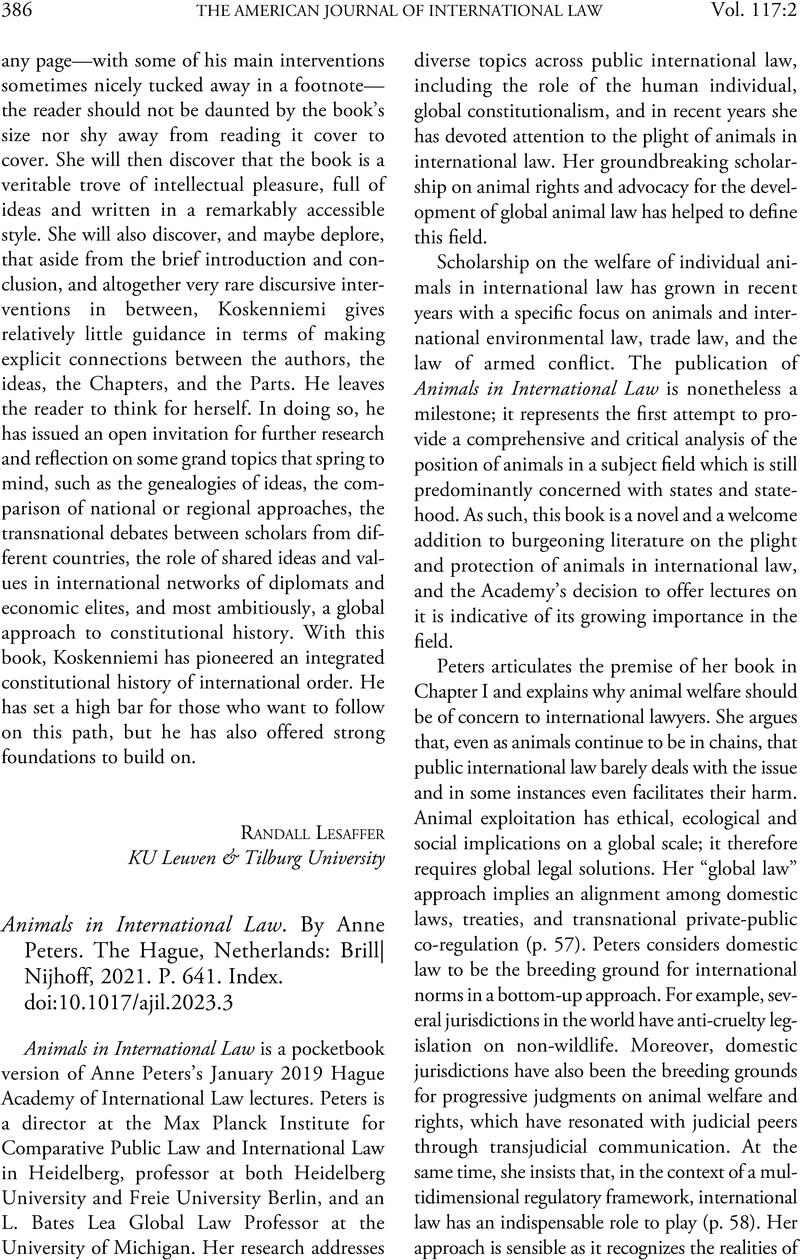No CrossRef data available.
Published online by Cambridge University Press: 13 April 2023

1 Werner Scholtz, Animal Welfare and International Environmental Law: From Conservation to Compassion (2019).
2 Convention on Biological Diversity, pmbl., Dec. 29, 1993, 1760 UNTS 79.
3 Kemal Baslar, The Concept of the Common Heritage of Mankind in International Law (1998).
4 Werner Scholtz, Animals as Common Heritage and Common Concern, in The Oxford Handbook of Global Animal Law (Anne Peters, Kristen Stilt & Saskia Stucki eds., forthcoming).
5 Elien Verniers, Bringing Animal Welfare Under the Umbrella of Sustainable Development: A Legal Analysis, 30 Rev. Eur., Comp. & Int'l Envtl. L. 349 (2021).
6 International Convention for the Regulation of Whaling, Dec. 2, 1946, 161 UNTS 2124.
7 Vienna Convention on the Law of Treaties, May 23, 1969, 1155 UNTS 331.
8 Bowman, Michael, “Normalizing” the International Convention for the Regulation of Whaling, 29 Mich. J. Int'l L. 293, 378 et seq. (2008)Google Scholar.
9 Stucki, Saskia, Towards a Theory of Legal Animal Rights: Simple and Fundamental Rights, 40 Oxford J. Legal Stud. 533 (2020)CrossRefGoogle ScholarPubMed.
10 Kurki, Visa, Legal Personhood and Animal Rights, 11 J. Animal Ethics 47 (2021)CrossRefGoogle Scholar.
11 Scholtz, Werner, Injecting Compassion into International Wildlife Law: From Conservation to Protection?, 6 Transnat'l Envtl. L. 463, 472 (2017)Google Scholar.
12 Tom Regan, The Case for Animal Rights (2d ed. 2004).
13 Sentencia No. 253-20-JH/22 (Derechos de la Naturaleza y animales como sujetos de derechos) (Corte Constitucional del Ecuador) (Ecuador).